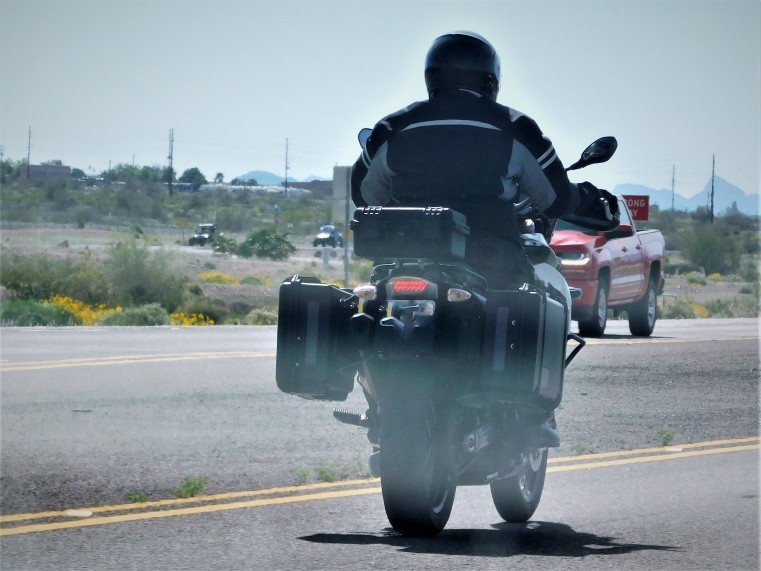How to Avoid Being Rear-Ended on Country Road?

Motorcycle Accident in Construction Sector on Interstate
May 24, 2022
Pedestrian Injured in Crosswalk by Motorcycle
May 24, 2022There are numerous things to do after being rear-ended on a country road. These include taking Precautions before a collision, avoiding the dangers, and receiving compensation for your injuries. Rear-ending a motorcyclist can be devastating and cause many serious injuries. Read on to learn how to avoid a rear-end collision and how to get compensation if you are injured in one. A Motorcycle Accident Attorney Palm Desert will help you get the compensation you deserve after an accident.
Precautions to take to avoid a rear-end collision
There are several precautions you can take to avoid a rear-end collision, including paying attention and slowing down gradually. If possible, use your turn signals to alert other drivers of your actions. Be sure to leave enough room between your vehicle and the vehicle in front of you, and follow each other at a safe distance. If there is a pedestrian on the road, signal your intentions to stop and be cautious of your surroundings.
Changing lanes gradually. The three-second rule can help you avoid rear-end collisions by giving yourself extra time to change lanes. Always make lane changes slowly and plan them in advance. It also helps to use turn signals when you want to change lanes. It gives you more time to react and gives you more options. It may seem obvious but slowing down when you notice a gap in the traffic line can help you avoid a collision.
During a rear-end collision, drivers should slow down and prepare for the impact. Depressed brakes can prevent rear-end collisions and lower the risk of serious injury. A driver should also use their horn in such an event. While it may be difficult to stop quickly, a depressed brake will focus the force of the collision inside the vehicle, reducing the chances of severe injuries.
Drivers should watch for cars in their blind spots and maintain a safe distance. Drivers should signal before changing lanes in an adjacent lane and turn their turn signals three to five seconds before the maneuver. Likewise, drivers should tap their horn lightly to indicate that they are making a maneuver. It’s also important to drive at least 10 mph faster than the vehicle that is passing them.
Seat belt use is a key factor in avoiding a rear-end collision. According to a recent study from the National Safety Council, less than half of drivers wear their seat belts. Drivers should avoid speeding, driving distracted, and following too closely. Drivers should also take care to pay attention and to listen to other drivers in order to avoid rear-end collisions. Additionally, drivers should pay attention to their blind spots, such as their rear-view mirrors, their windshield pillars, and even highway road signs. In addition, drivers should look twice when making a right-hand turn, as vehicles can appear very quickly.
Dangers of a rear-end collision
Rear-end collisions are especially dangerous because the driver of the vehicle that is hit usually has his or her hands on the steering wheel. Often, the driver has seen the other car coming in his or her rear-view mirror and therefore instinctively stiffened up in anticipation of the impact. Unfortunately, this can cause multiple injuries, including broken wrists, stress fractures, dislocated shoulder, and tendon damage.
The majority of rear-end accidents occur during the day, on dry, straight roads. And in most cases, the driver in the rear of the car is not paying attention to the road and is able to crash into the car ahead. That means that the driver in the back of the vehicle may not see the car slowing or stopping suddenly and will be unable to stop in time. Because rear-end collisions are so common, it’s crucial to be extra cautious on country roads.

The rear-end crash is dangerous because it can cause serious injuries, including brain damage. In addition to the obvious bruising and bleeding, this type of collision can result in traumatic brain injuries. The head can be hit on several objects, including the steering wheel, windshield, and seat back. Depending on the severity of the crash, the trauma to the head may cause bruising, swelling, and concussion. This head trauma can affect the victim’s ability to function, even days after the crash.
Rear-end collisions can also be dangerous for cars. While most rear-end collisions are caused by a distracted driver, they can still lead to catastrophic T-bone collisions. In the worst case scenario, a distracted driver can cause a crash that causes multiple injuries. Rear-end collisions can cause a car to roll into oncoming traffic and even cause it to collide with another vehicle.
Rear-end collisions are the most common type of car crash in the U.S., with around 1.7 million incidents every year. Though most rear-end collisions result in little damage to either vehicle, they can cause major injuries. Although some people who are involved in these collisions do not feel much pain, the severity of the injuries can be severe. Even the smallest ding can cause hidden damage.
Precautions to take after a rear-end collision
While motorcycling is a fun activity, it is crucial to practice safety and follow all applicable traffic laws. While motorcyclists should always assume other drivers cannot see them, this does not always work. Motorcyclists should avoid riding on busy country roads and keep a safe distance from other drivers. After a motorcycle rear-end collision, follow the tips below to prevent further incidents.
While an accident can never be avoided, it is important to know what to do afterward to minimize injury and stay out of further danger. If you are injured, take the time to call emergency services immediately. Be prepared to speak with ES or the police. Also, always follow speed limits and reduce your speed when conditions are poor. Never ride a motorcycle when you are physically compromised or ill.
After a motorcycle rear-end collision on a country road, it is important to call 911. If possible, the police will arrive at the scene and call for paramedics. Once the police arrive, you should seek medical attention immediately. Even though some injuries will not be immediately visible, they may take days or even weeks to manifest. In addition, broken bones and internal damage may take several days or weeks to manifest themselves.
As a result of a motorcycle rear-end collision, the injured rider is at greater risk of serious injury compared to other drivers. They can sustain severe trauma and be permanently disfigured, and their medical costs can be catastrophic. Moreover, when a motorcyclist suffers a catastrophic injury, the insurance company is more likely to deny their claims or settle them for low-ball settlements. Burns and other injuries may occur due to contact with hot components of the motorcycle, road hazards, and roadway surfaces. If the rider sustains any of these injuries, it is best to consult with a lawyer about how to get compensation for your pain and suffering.
Motorcycles can be more difficult to see than other vehicles. The driver may be speeding, not looking out for a motorcycle, or he or she may simply be distracted. Motorcyclists should always check their blind spots and use their rear view mirrors to avoid rear-end collisions. Similarly, drivers should check their brake lights and tail lights regularly. Replace them if necessary.
Compensation for injuries caused by a rear-end collision
The damages caused by a motorcycle rear-end collision can be significant. Severe injuries may require immediate medical attention. As a result, you may be entitled to more compensation than the cost of the motorcycle itself. In some cases, you may have lost wages or needed to take time off from work as a result of your injuries. If you or a family member has been seriously injured in a motorcycle crash, you may be able to file a lawsuit for compensation.
Rear-end collisions are common causes of whiplash. The force of the impact forces on the rider’s head back and forth. This sudden stop in movement can cause severe injuries to muscles, ligaments, and tendons. Depending on the speed of the collision, whiplash can lead to chronic headaches, arm weakness, and shoulder stiffness. In severe cases, this type of injury may even result in paralysis.
If the accident was your fault, you must file a third-party insurance claim against the other party’s insurer. While you may feel confident handling the insurance claim process, it is advisable to hire a motorcycle accident attorney to help you fight for maximum compensation. It’s important to contact a motorcycle accident lawyer as soon as possible after the crash, as you may lose the opportunity to file a lawsuit.
If you or your passenger were not wearing a helmet, the other driver may attempt to blame you for the accident. You can hold the negligent driver accountable for negligence and broken traffic laws, if applicable. Furthermore, if the other driver was impaired by drugs or alcohol, he or she may be held responsible for the accident as well. You can also seek compensation if your motorcycle driver violated traffic laws, or if you were drinking and distracted.
Getting medical attention is critical if you’re involved in a motorcycle rear-end collision on a country road. Make sure to call 911 and seek medical attention for yourself and your passenger if you’re able to do so. Serious injuries, such as broken bones, can take days, or even weeks to manifest themselves, and medical attention is critical. If you are unable to work due to the injuries, you may need to hire a lawyer to represent you.

